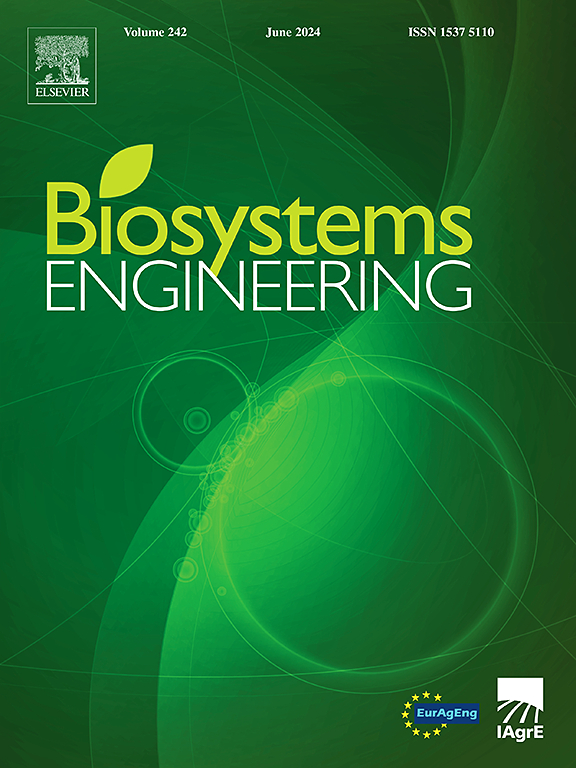Optimising and analysis of the hydraulic performance of a water dispersion needle sprinkler using RF-NSGA II and CFD
IF 4.4
1区 农林科学
Q1 AGRICULTURAL ENGINEERING
引用次数: 0
Abstract
The hydraulic performance of a needle dispersion sprinkler is related to the combination of its rotation speed and the parameters of the water dispersal needle, which impacts the water-saving and energy-saving efficacy of the sprinkler irrigation system. An experimental device was designed to provide data, and the random forest model (RF) and non-dominated sorting genetic algorithm II (NSGA II) were employed to optimise throw radius and combined uniformity. A CFD method was used to analyse the mechanism for improving hydraulic performance. The results indicated that the RF model predicted the throw radius and combined uniformity with high accuracy and the minimum fit value exceeded 0.96. The maximum deviation between the RF-NSGA II algorithm results and the experimental results did not exceed 8%. The optimisation results achieved the optimal matching of key parameters and improve the throw radius and uniformity. The decrease in entropy production and the increase in jet velocity were the primary reasons for the increase in the throw radius. The increased air entrainment rate and the enlarged liquid film distribution area, along with an increased number of ligaments and droplets, contribute to an improved combined uniformity. This study provides valuable insights and references for improving the hydraulic performance of sprinkler.
利用 RF-NSGA II 和 CFD 优化和分析水分散针式喷洒器的水力性能
喷针分散喷头的水力性能与其转速和喷针参数的组合有关,直接影响喷灌系统的节水节能效果。设计实验装置提供数据,采用随机森林模型(RF)和非支配排序遗传算法II (NSGA II)对投掷半径和组合均匀性进行优化。采用CFD方法分析了提高水力性能的机理。结果表明,该模型预测投掷半径和组合均匀性精度较高,最小拟合值超过0.96。RF-NSGA II算法结果与实验结果的最大偏差不超过8%。优化结果实现了关键参数的最优匹配,提高了抛射半径和均匀性。熵产的减小和射流速度的增大是抛射半径增大的主要原因。增加的空气夹带率和扩大的液膜分布面积,以及增加的韧带和液滴数量,有助于提高组合均匀性。该研究为提高喷头的水力性能提供了有价值的见解和参考。
本文章由计算机程序翻译,如有差异,请以英文原文为准。
求助全文
约1分钟内获得全文
求助全文
来源期刊

Biosystems Engineering
农林科学-农业工程
CiteScore
10.60
自引率
7.80%
发文量
239
审稿时长
53 days
期刊介绍:
Biosystems Engineering publishes research in engineering and the physical sciences that represent advances in understanding or modelling of the performance of biological systems for sustainable developments in land use and the environment, agriculture and amenity, bioproduction processes and the food chain. The subject matter of the journal reflects the wide range and interdisciplinary nature of research in engineering for biological systems.
 求助内容:
求助内容: 应助结果提醒方式:
应助结果提醒方式:


